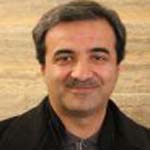Estimation of land surface temperature in relation to land-use using remote sensing technology and geographic information system (Case study: Tabriz city(
The purpose of the present study is to assess the land surface temperature in relation to landuse for the city of Tabriz using remote sensing technology and GIS. Landsat 8 satellite image was used to map the land surface temperature for the study area. Atmospheric correction was applied to the desired image using the FLAASH method and the land surface temperature was estimated using the split-window algorithm for the study area with an accuracy of 1.51 degrees. Landuse map of Tabriz city in 6 classes was obtained using the object-based approach in eCognition software with an accuracy of 90/03. The results of studying the relationship between land surface temperature and landuse indicate that agricultural lands with a temperature of 18.22 °C have the highest land surface temperature. Also, water areas (rivers) have the lowest (10.30 °C) land surface temperature, because of their radiant power close to one. The research results also indicate that the split-window algorithm provides reliable results for land surface temperature estimation that can be used in environmental studies and earth sciences.
-
flood flow zoning for different return periods using hydrodynamic model HEC-RAS (Case Study: Gomanab Chai River)
Mohammadhossein Rezaei Moghaddam *, Dawood Mokhtari, Tohid Rahimpoor, Meisam Skandar
quantitative geomorphological researches, Spring 2025 -
Flooding Assessment of Qaleh Chai basin Using MABAC Multi Criteria Decision Making Method
Mohammadhossein Rezaei Moghaddam *, Masoumeh Rajabi, Tohid Rahimpour, Ayuob Farazian
Journal of Environmental Hazard Management, Winter 2025 -
Assessment of urban quality of life in Ardabil city using integrated remote sensing data and spatial analysis
Mohammad Kazemi Garajjeh *, Khalil Valizadeh Kamran
Research and Urban Planning, -
Measuring sea surface temperature and water depthusing Landsat 8 satellite imageryand estimating the relationship between themCase study: Urmia and Van Lakes
Mohammad Kazemi Garaje *, Khalil Valizadeh Kamran
Journal of of Geographical Data (SEPEHR),



